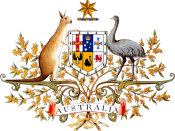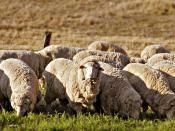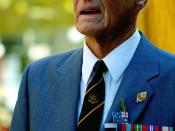Fiona Nicoll's chapter 'Gender, desire and the digger' from her book "Diggers to Drag Queens" deals with issues surrounding Australian national identity through gendered terms with her main focus being that of the ANZAC or digger legend. Nicoll examines representations, ideologies, misconceptions, connotations and other analyses surrounding Australia and it's participation in different conflicts over time.
Nicoll examines the different imagery surrounding women and war, how women are represented in different spheres of Australian life, political realms, memory and popular history. Nicoll studies media and the representations of women as the loyal, emotionally wrought, patient, homely woman waiting for her husband to return from the front line. Then there is the woman participating in what would be considered a traditionally male image on the frontline, nothing indicative of femininity, deliberately making reference to the fact this soldier is female and this is unusual.
Nicoll uses the examples of art and war art, either females in the art albeit not in art, females as war artists and the challenges some women found they encountered to get recognition for their work.
Nicoll found that women for years have been omitted from representation in war art or they are treated as something displaced from the traditional, normal or socially recognised and are not incorporated into the mainstream.
Nicoll studied the connotations of women in the armed forces in art and how it is usually allegories, usually historical or mythological allegories attributed to the feminine that is used to present women in the Australian war narrative.
Nicoll analysed ideas of femininity and masculinity surrounding the ANZAC legend and how femininity is regarded as a weakness and that shell shocked soldiers were considered to be lacking in masculine attributes and acting in a manner that was atypically thought of as being feminine.
Another approach Nicoll...


